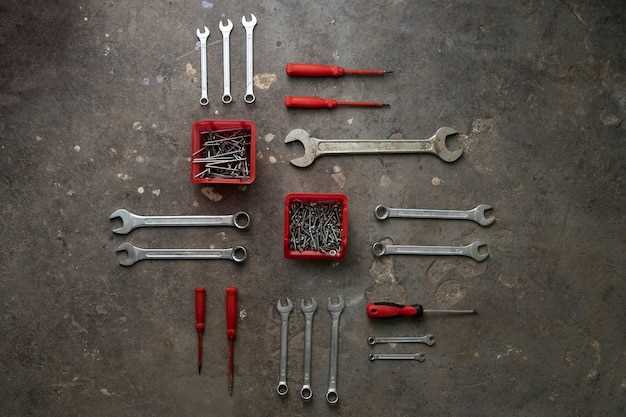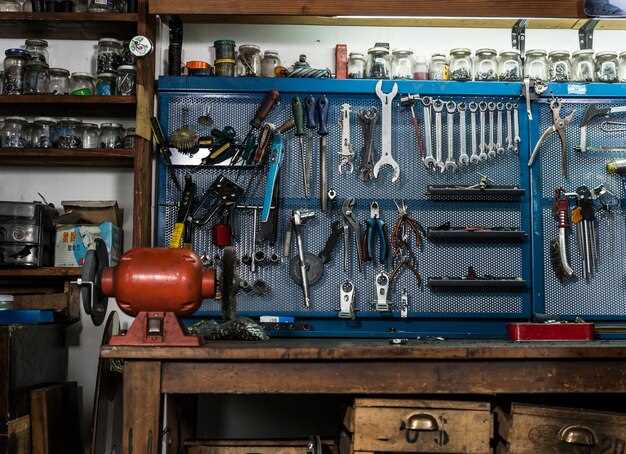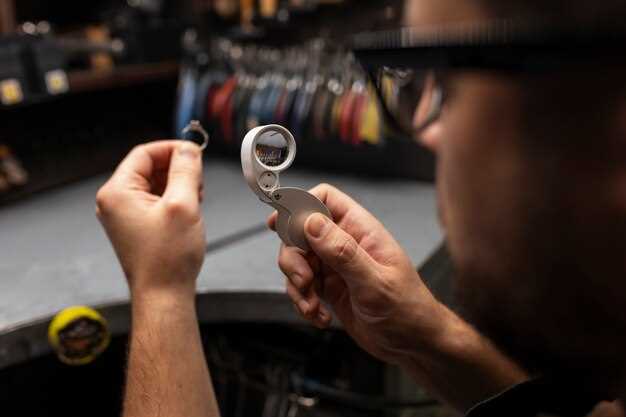
Restoring a classic muscle car is a rewarding yet challenging endeavor that requires a combination of technical knowledge and the right tools. Whether you are a seasoned mechanic or a novice enthusiast, understanding the essential tools for car restoration can significantly impact the success of your project. From engine rebuilds to bodywork, having the right equipment at your disposal can make the difference between a smooth restoration process and a frustrating journey filled with obstacles.
In the world of muscle car restoration, every detail counts. The tools you choose not only streamline your efforts but also ensure that every component meets the standards of quality and performance expected from a classic vehicle. Key tools like wrenches, sockets, and specialized equipment allow you to tackle various aspects of the restoration process, from disassembly to final assembly, with confidence. A well-equipped workspace also fosters an environment where creativity and craftsmanship can thrive.
This article will explore the crucial tools necessary for achieving muscle car restoration success. By arming yourself with the right equipment, you’ll be prepared to face any challenges head-on, transforming your dream car into a vibrant reality that turns heads on the road.
Identifying Necessary Hand Tools for Restoration Projects

Restoring a classic car requires a specific set of hand tools that are essential for success. Whether you are a seasoned mechanic or a novice enthusiast, having the right tools on hand can make a significant difference in your restoration efforts. Below is a comprehensive list of necessary hand tools categorized by their primary functions.
| Tool Category | Essential Tools | Purpose |
|---|---|---|
| General Tools | Wrenches, Screwdrivers, Pliers | For loosening or tightening bolts, screws, and fasteners. |
| Measurement Tools | Tape Measure, Caliper, Level | To ensure precise measurements during assembly and alignment. |
| Electrical Tools | Wire Strippers, Multimeter, Soldering Iron | For electrical system repairs and diagnostics. |
| Bodywork Tools | Hammers, Dollies, Body Filler Tools | To repair and shape metal body panels. |
| Fastening Tools | Jack, Torque Wrench, Impact Driver | For safely raising the vehicle and securing components. |
| Safety Tools | Gloves, Safety Glasses, Ear Protection | To ensure personal safety during restoration activities. |
Having a well-rounded selection of these tools will position you for effective restoration of classic cars. Additionally, investing in high-quality tools can result in greater efficiency and prevent damage to your vehicle during the project.
Essential Power Tools to Simplify Muscle Car Repair
Restoring a classic muscle car is an exciting yet challenging endeavor that requires the right tools to ensure efficiency and precision. Power tools play a crucial role in this process, enabling car enthusiasts to tackle various tasks with ease. Here are some essential power tools that will simplify muscle car repair and contribute significantly to a successful restoration.
A high-quality impact wrench is indispensable for any muscle car restoration project. This tool allows for quick removal and installation of bolts, speeding up the process of disassembling and reassembling components such as the engine and suspension. The torque provided by an impact wrench ensures that fasteners are secured correctly, reducing the risk of mechanical issues later on.
Another key tool is a power sander. Whether you’re working on body panels or preparing surfaces for painting, a power sander saves time and effort compared to manual sanding. With the right attachments, it can effectively smooth out imperfections and remove rust, preparing your classic car for the finishing touches it deserves.
A portable band saw is also an excellent addition to your toolkit. This tool allows for precise cuts on various materials, including metal and plastic. Whether you’re fabricating new parts or modifying existing ones, a band saw provides accuracy that is essential for maintaining the integrity of your muscle car’s design.
A full-featured power drill with multiple bits is vital for any restoration project. It enables you to drill holes, fasten screws, and apply various accessories, making it a versatile selection for tasks ranging from interior work to engine assembly. When restoring a classic car, having a reliable drill can simplify many processes and enhance overall productivity.
Lastly, consider investing in a quality angle grinder. This tool is ideal for cutting, grinding, and polishing, making it invaluable when working with metal components. An angle grinder allows you to shape and modify parts precisely–a critical aspect when restoring the classic design of a muscle car.
Arming yourself with these essential power tools will not only streamline the muscle car repair process but also ensure that your restoration efforts yield top-notch results. Selecting the right tools makes all the difference in achieving a flawless outcome for your classic automotive project.
Choosing the Right Welding Equipment for Classic Cars
Welding is a critical part of the restoration process for classic cars. Selecting the appropriate welding equipment can make a significant difference in the quality and durability of the repairs. Understanding the different types of welding methods and their applications is essential for achieving optimal results.
Here are key factors to consider when choosing welding equipment for classic car restoration:
- Welding Process: The two primary welding processes used in car restoration are MIG (Metal Inert Gas) and TIG (Tungsten Inert Gas). Each has its advantages and considerations:
- MIG welding is generally easier to learn and is suitable for thicker metal sections. It provides fast and efficient welding, making it a popular choice for many restorers.
- TIG welding offers precise control and is ideal for thin materials. It produces high-quality welds and is preferred for more intricate work, especially on visible areas where aesthetics matter.
- Welder Size and Power: The welder’s amperage rating determines its capacity to handle various thicknesses of metal. A welder rated between 130 to 200 amps is suitable for most classic car restoration tasks. Consider models with adjustable settings for versatility.
- Material Compatibility: Ensure that the welder can handle various materials common in classic cars: steel, aluminum, and stainless steel. Check for any additional accessories needed for specific materials.
- Portability: If you plan to work in different locations, consider investing in a portable unit. Lightweight models allow for ease of transport and can make the restoration process more flexible.
- Safety Features: Look for machines with built-in safety features such as thermal overload protection and automatic shut-off to enhance safety during use.
Once you have selected the right equipment, it’s crucial to practice and familiarize yourself with the welding techniques to progress effectively. Mastery of your welding tools will greatly aid in achieving a successful and thorough restoration of classic cars.
Must-Have Diagnostic Tools for Engine Restoration
When undertaking an engine restoration project for a classic muscle car, having the right diagnostic tools can significantly enhance the process and outcome. These essential tools help identify issues and ensure optimal performance after restoration.
A first must-have is an OBD-II scanner. Although many muscle cars predate the OBD-II standard, it’s crucial for modern adjustments and can assist with diagnosing newer components. It connects directly to the computer system of the car, providing codes that point to potential issues in the engine or other systems, simplifying the troubleshooting process.
Next, a compression tester is invaluable for assessing the health of the engine. By measuring the compression in each cylinder, you can determine if there are any significant leaks or mechanical failures that need addressing during the restoration. High compression readings signal a strong engine, while low readings warrant further investigation.
An ignition system tester is also crucial for restoring spark plug performance. This tool checks the ignition system’s voltage and ensures that the spark plugs are firing correctly. Proper ignition is essential for engine efficiency and performance.
A fuel pressure gauge aids in checking the fuel system, which is vital for engine functionality. This tool helps determine if the fuel pump and line are functioning correctly, ensuring the engine receives the right amount of fuel for optimal performance.
Additionally, a multimeter is essential for diagnosing electrical issues within the engine’s systems. It can measure voltage, current, and resistance, which are vital for troubleshooting wiring problems, sensors, and the ignition system.
Lastly, a vacuum gauge is useful for diagnosing issues related to engine performance. By measuring manifold vacuum, it can provide insights into the health of the engine and point towards any timing issues, choke problems, or leaks that may need attention during the restoration.
Equipping yourself with these diagnostic tools will facilitate a more informed and successful muscle car engine restoration, ensuring that you achieve the performance and reliability you desire.
Organizational Tools to Streamline the Restoration Process
When embarking on a classic muscle car restoration, having the right organizational tools can significantly enhance the efficiency and success of the project. These tools allow restorers to keep track of various components, documents, and tasks, ensuring a harmonious workflow throughout the restoration process.
First and foremost, a detailed project management software can help in planning out each phase of the restoration. This tool enables restorers to create a timeline, set deadlines, and allocate resources effectively. By breaking down the whole task into manageable steps, classic car enthusiasts can visualize their progress and ensure they stay on track.
An inventory management system is another essential tool. This allows restorers to catalog parts, tools, and materials needed for the restoration. By maintaining an organized inventory, enthusiasts can easily track what has been acquired, what still needs to be purchased, and where each item is located. This reduces the time spent searching for tools or parts during the restoration process.
Printed or digital work logs serve as invaluable documentation tools. Keeping detailed records of the restoration stages, including photographs and inspection notes, aids in maintaining the integrity of the project. These logs can also serve as future references or guides for additional restorations or maintenance.
Moreover, utilizing a checklist system can ensure that no critical steps are overlooked. Whether it’s cleaning, painting, or mechanical upgrades, having a comprehensive checklist helps restorers systematically complete each task while maintaining a focus on the overall goals of the restoration.
Finally, utilizing labeling tools for parts and components can dramatically streamline the process. By labeling wires, bolts, and other small items, restorers can avoid confusion during reassembly, saving precious time and reducing frustration.
In conclusion, leveraging organizational tools like project management software, inventory systems, work logs, checklists, and labeling solutions can dramatically improve the efficiency of muscle car restoration projects. By incorporating these tools into the workflow, restorers can focus on what they love most–bringing classic cars back to life.
Protective Gear That Every Restorer Should Own

Restoring a muscle car requires not only skill and the right tools but also proper protective gear to ensure safety during the restoration process. The following items are essential for every restorer to own.
First and foremost, a quality pair of safety goggles is indispensable. These glasses safeguard your eyes from dust, debris, and harmful chemicals that may be present while working on your car. It’s essential to choose goggles that provide a snug fit and offer full coverage.
Next, invest in a durable set of gloves. Mechanics’ gloves are ideal as they provide both dexterity and protection against sharp metal edges and chemicals. Look for gloves that are resistant to cuts and also offer a good grip, ensuring that handling tools is safe and efficient.
A reliable respirator is crucial for working with paints, solvents, and other fumes that can be hazardous to your health. Choose a respirator designed for automotive applications, as it will filter out harmful particles and chemicals, allowing you to breathe safely during restoration tasks.
Steel-toed boots are another vital component of your protective gear. They protect your feet from heavy objects that could fall or roll during restoration. Steel-toed footwear provides additional comfort and stability, especially when standing for long periods.
Lastly, wearing a well-fitted coverall can protect your skin and clothing from chemicals, paint splatters, and grime. Look for coveralls that are made from durable materials and feature pockets for convenient storage of small tools.
By equipping yourself with high-quality protective gear, you not only enhance your safety but also improve your efficiency and focus during the muscle car restoration process.




